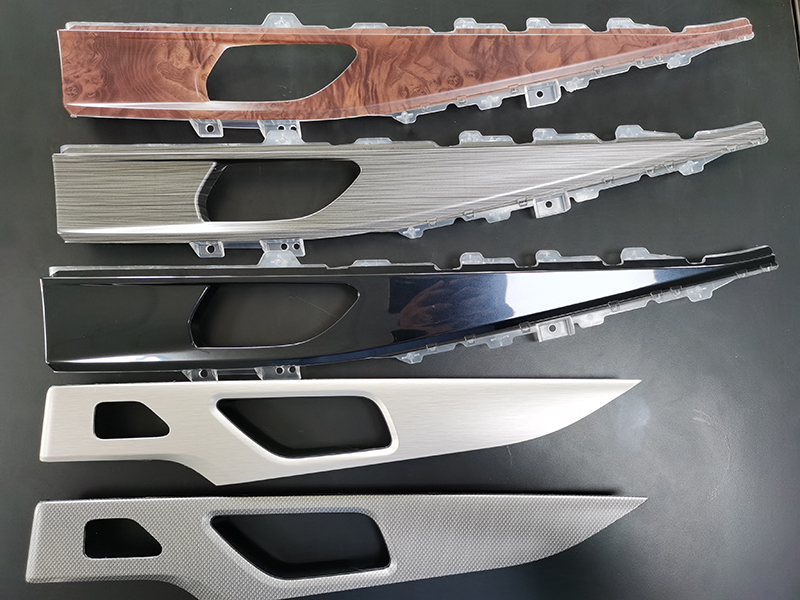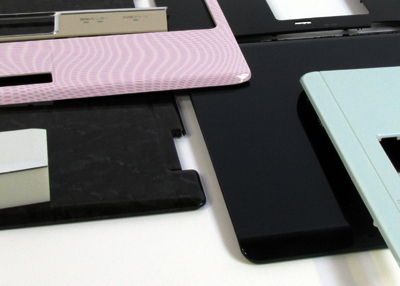In-Mold Decorations: Integrating Design and Manufacturing Excellence
In-Mold Decorations: Integrating Design and Manufacturing Excellence
Blog Article
Understanding In-Mold Decorations: Approaches, Patterns, and Best Practices for Ideal Outcomes
In the world of manufacturing, the art of in-mold designs stands as a crucial facet of item layout and manufacturing. In-Mold Decorations. By delving into the methods, fads, and ideal techniques that underpin effective in-mold decor processes, organizations can open a world of opportunities that not just boost the visual attraction of their items yet additionally enhance manufacturing effectiveness and strengthen customer engagement.
Material Selection
Material selection is an essential facet of mastering in-mold designs, as it directly impacts the quality and sturdiness of the end product. When picking materials for in-mold decorations, it is important to take into consideration aspects such as compatibility with the molding process, the desired aesthetic outcome, and the ecological problems the item will face. Thermoplastic materials like polycarbonate, polypropylene, and abdominal muscle are generally made use of for in-mold designs because of their flexibility and capacity to accomplish elaborate styles. These materials supply outstanding moldability, allowing suppliers to create complex shapes and patterns with accuracy.
In addition, the chosen product should have excellent adhesion residential properties to guarantee that the decoration sticks firmly to the substrate throughout the molding procedure. Attachment between the material and the decoration is vital for preventing delamination and ensuring durable visual appeal. Furthermore, products with high heat resistance are chosen for in-mold decorations, specifically for items that will be exposed to elevated temperature levels throughout their lifecycle. By meticulously choosing the proper product for in-mold decors, manufacturers can enhance the general quality and sturdiness of their items, fulfilling the assumptions of both end-users and customers.
Style Technology
A crucial consider progressing the area of in-mold designs is the constant exploration and execution of design innovation techniques. Layout development plays a critical function in improving the aesthetic allure, capability, and general top quality of items manufactured using in-mold decor processes. By incorporating cutting-edge layout components, makers can differentiate their items out there, attract customers, and remain ahead of rivals.
Among the essential facets of style innovation in in-mold designs is the assimilation of complex patterns, structures, and graphics that were formerly challenging to attain with standard decoration methods. Advanced modern technologies such as 3D printing and electronic design devices enable designers to create facility and in-depth designs that can be effortlessly transferred onto shaped parts. In addition, making use of dynamic shades, metallic coatings, and unique impacts like gloss or matte appearances can better raise the aesthetic appeal of in-mold enhanced items.
Additionally, layout innovation expands beyond aesthetic appeals to encompass practical improvements such as ergonomic shapes, integrated features, and adjustable components that deal with particular customer needs. By accepting layout development, makers can unlock brand-new opportunities for imagination, item, and customization differentiation in the affordable landscape of in-mold decors.
Manufacturing Efficiency
Efficient manufacturing processes are vital for equating the innovative designs created in the area of in-mold designs into top quality finished items that satisfy market demands and consumer assumptions. In the realm of in-mold decorations, manufacturing effectiveness encompasses numerous crucial facets that contribute to the overall success of the production process.
In addition, applying automation and robotics in the assembly line can considerably improve performance by improving repetitive jobs and decreasing the margin of mistake. Automation not only speeds up the click to read production procedure but likewise enhances precision and repeatability, leading to a more top quality and consistent final product. Moreover, adopting lean production principles, such as just-in-time inventory management and waste decrease approaches, can even more boost manufacturing effectiveness by minimizing downtime and maximizing resource application. In general, an all natural approach to production performance is paramount in taking full advantage of the capacity of in-mold decor strategies and attaining ideal cause the open market landscape.
High Quality Control Procedures
What are the key approaches for guaranteeing stringent high quality control measures in the world of in-mold decors? Quality control procedures are critical in in-mold decor processes to make sure the production of perfect and top quality ended up products.
Making use of sophisticated modern technologies such as automatic examination systems can also boost the top quality control process by offering trustworthy and exact data for analysis. These systems can discover blemishes that may be missed by hand-operated inspections, thus enhancing total product top quality and consistency.

Normal training and development programs for workers associated with the in-mold decor process can likewise add to keeping high-grade requirements. By informing team on ideal practices, high quality assumptions, and the relevance of attention to detail, companies can promote a culture of high quality awareness throughout the organization.
Consumer Charm
To improve the bankability of in-mold design items, recognizing and catering to consumer choices play a vital role in identifying their charm and success. Customer allure in in-mold decors is affected by different aspects, including style appearances, shade selections, longevity, and total functionality. Customers are progressively looking for customized and unique products that reflect their uniqueness and design. Using personalization options such as individualized layouts, color variants, and textural aspects can considerably enhance the allure of in-mold decor items.

Verdict
In-mold decorations provide a flexible and reliable way to improve product visual appeals. By very carefully picking products, welcoming cutting-edge designs, enhancing production processes, executing high quality control actions, and focusing on customer allure, manufacturers can achieve optimal outcomes. It is critical for business to continuously adapt and enhance their approaches to stay affordable in the marketplace. In-Mold Decorations. Mastering in-mold decors calls for an alternative strategy that considers all aspects of the production procedure to make sure success.
In the realm of manufacturing, the art of in-mold decorations stands as an essential element of item style and production. Layout development plays an important role in improving the aesthetic allure, functionality, and total high quality of items produced using in-mold design procedures.One of the essential facets of style innovation in in-mold decors is the integration of intricate patterns, appearances, and graphics that were previously challenging to attain with standard decoration techniques.Efficient manufacturing processes are crucial for equating the cutting-edge styles developed in the field of in-mold designs right into premium ended up products that satisfy market demands and consumer assumptions. Offering personalization alternatives such as customized layouts, color variants, and textural elements can substantially boost the appeal of in-mold design items.
Report this page